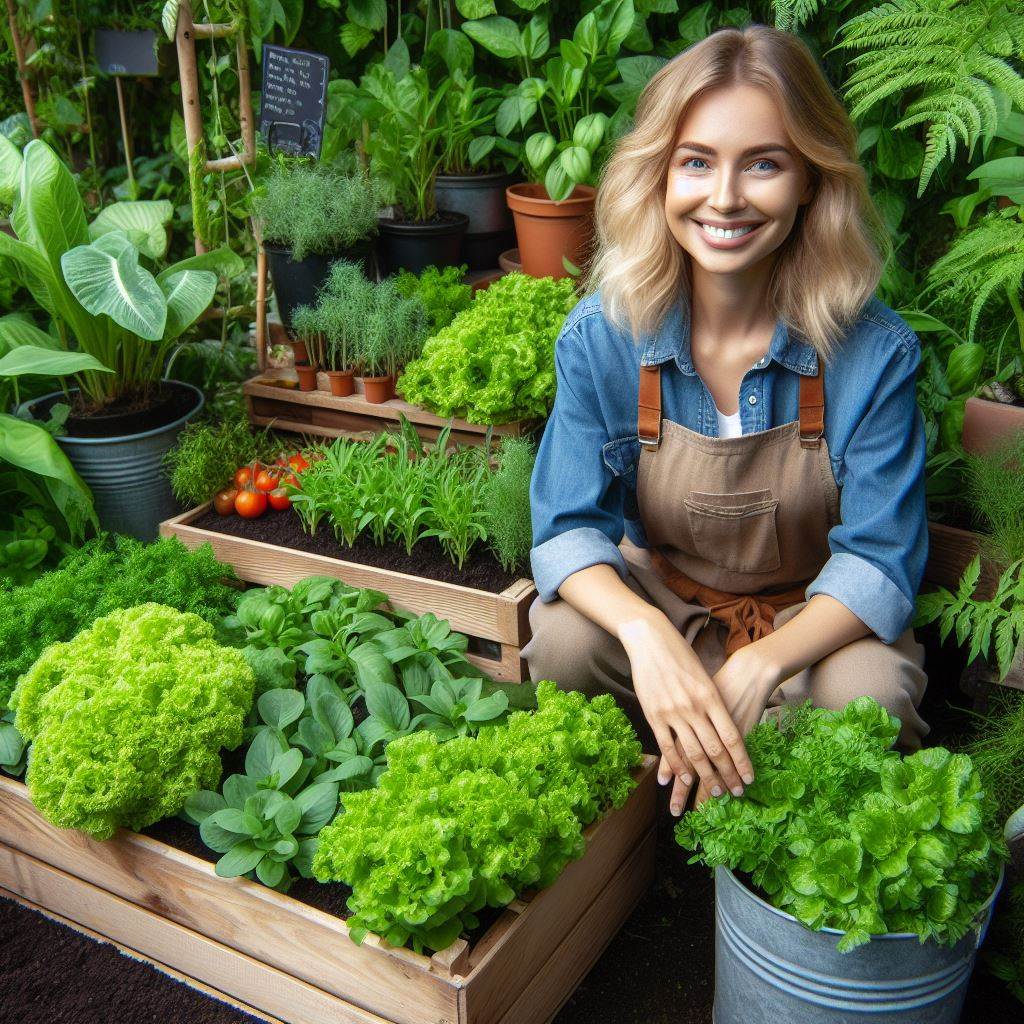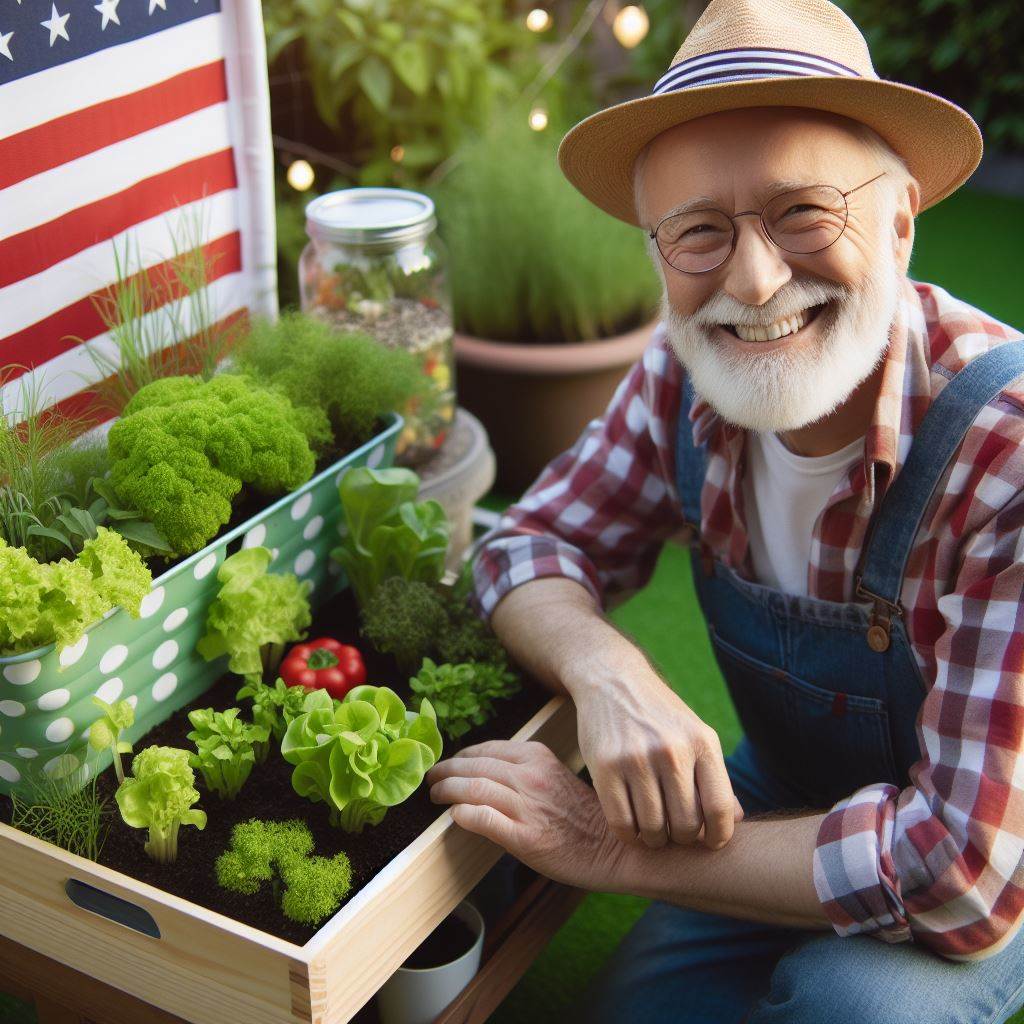Introduction
Innovative agriculture, including space-saving farm hydroponic techniques, is transforming our farming methods and approaches.
Hydroponic techniques, gaining widespread acclaim, revolutionize traditional farming by optimizing space utilization.
As urbanization surges, the need for efficient, space-saving farming methods intensifies.
Hydroponics, a soilless cultivation method, proves a game-changer, enabling crops to flourish vertically and horizontally in confined spaces.
This blog explores the burgeoning world of hydroponics, shedding light on its rapid adoption in response to global space constraints.
Dive into the future of farming with us as we unravel the benefits, challenges, and potential of hydroponic techniques.
Whether you’re an urban dweller or a traditional farmer, understanding this transformative method is crucial for sustainable agriculture.
Join us on a journey through the hydroponic landscape, where innovation meets necessity, promising a greener, more space-efficient agricultural future.
Explanation of Hydroponic Techniques
Define hydroponics and its advantages over traditional farming
Hydroponics is a method of growing plants without soil, using a nutrient-rich water solution instead.
It offers several advantages compared to traditional farming methods.
- Increased crop yield: Hydroponics allows plants to grow in a controlled environment with optimal nutrient and water supply, resulting in higher yields.
- Water conservation: The hydroponic system recirculates water, reducing water consumption by up to 90% compared to soil-based farming.
- Less space requirement: Hydroponics can be implemented in urban areas, rooftops, or small spaces, utilizing vertical farming techniques.
- Reduced dependency on pesticides: With proper monitoring and control, hydroponics minimizes the need for harmful chemical pesticides.
- Faster growth and harvest cycle: Plants grown hydroponically receive all essential nutrients, leading to faster growth and shorter time to harvest.
Different types of hydroponic systems, including
Nutrient Film Technique (NFT)
In the NFT system, a thin film of nutrient solution flows over the roots of the plants, providing constant nourishment.
It uses channels or pipes to allow the roots to access the solution while maintaining a shallow film for optimum oxygen availability.
The NFT system is ideal for leafy greens and smaller, shallow-rooted plants.
Deep Water Culture (DWC)
DWC involves suspending plant roots in a nutrient-rich solution, allowing for maximum nutrient absorption and oxygenation.
The roots are submerged in the water, supported by a floating platform or net pots.
This method is suitable for larger plants like tomatoes, cucumbers, and herbs.
Aeroponics
Aeroponics involves suspending plant roots in air while periodically misting them with a nutrient solution.
The roots have access to oxygen, and the nutrient mist ensures optimal nourishment.
Aeroponics is highly efficient and popular for growing delicate plants like orchids and strawberries.
Benefits of hydroponics in terms of space utilization
Hydroponics offers significant space-saving advantages compared to traditional farming methods.
By eliminating the need for soil, plants can be grown in smaller areas, vertically stacked or in compact systems.
This vertical farming technique allows for maximized space utilization, especially in urban environments.
Vertical hydroponic systems can be implemented in buildings, rooftops, or even shipping containers, making it possible to grow crops in the heart of the city.
The space-saving aspect of hydroponics also opens up opportunities for urban farming, allowing individuals and communities to cultivate their own fresh produce, even in limited spaces.
In general, hydroponics is a revolutionary farming technique that offers numerous benefits over traditional methods.
It maximizes crop yield, conserves water, reduces pesticide use, and allows for faster growth and harvest cycles.
The three main types of hydroponic systems are the Nutrient Film Technique (NFT), Deep Water Culture (DWC), and Aeroponics, each catering to different plant varieties.
Furthermore, hydroponics optimizes space utilization, enabling urban farming and vertical farming practices.
Read: Seasonal Planting Strategies for Hobbyists
Space-Saving Benefits of Hydroponics
In this section, we will explore the space-saving benefits of hydroponics and how it can be a solution for limited land availability.
We will also discuss the use of vertical farming in hydroponics and how it eliminates the need for large outdoor fields.
Let’s delve into the world of hydroponics and its space-saving wonders!
Hydroponics: A Solution for Limited Land Availability
- Maximizing Land Utilization: Hydroponics allows us to grow plants without soil, making it possible to grow crops in areas with limited land availability.
- Vertical Gardening: Vertical farming techniques used in hydroponics enable farmers to stack plants on top of each other, utilizing vertical space efficiently.
- Tiered Plant Racks: By using tiered plant racks, hydroponic systems make use of vertical space effectively, multiplying crop yield per square foot.
- Optimal Space Utilization: With hydroponics, plants can be grown closer together, reducing wasted space and maximizing the yield per unit area.
- Urban Farming: Hydroponics is ideal for urban areas where space is limited, enabling individuals to grow fresh produce in the heart of the city.
Vertical Farming in Hydroponics
- The Concept of Vertical Farming: Vertical farming is a technique that involves growing plants vertically, using methods like hydroponics.
- Vertical Growth Structures: Vertical farms utilize structures like shelves, racks, or towers to create multiple levels for plant growth.
- Utilizing Building Walls: Vertical hydroponic systems can be installed on building walls, transforming unused vertical space into productive farms.
- Sustainable Space Utilization: Vertical farming optimizes space utilization by growing plants upwards, reducing the need for expansive horizontal fields.
- Increased Crop Production: Vertical hydroponics allows for higher crop yields by utilizing both natural and artificial lighting efficiently.
Growing Crops Indoors: Eliminating the Need for Large Outdoor Fields
- Year-Round Cultivation: Indoor hydroponics enables farmers to grow crops regardless of seasonal changes, creating a constant supply of fresh produce.
- Protection from Environmental Factors: Indoor hydroponic systems provide a controlled environment, protecting crops from extreme weather conditions and pests.
- Minimized Water Usage: Hydroponics uses water more efficiently compared to traditional farming techniques, reducing the overall water consumption.
- Reduced Dependency on Fertile Land: By eliminating the need for large outdoor fields, hydroponics minimizes the dependency on limited and fertile agricultural land.
- Efficient Resource Utilization: Indoor hydroponics systems optimize the use of resources like water, nutrients, and energy, leading to sustainable agriculture.
In essence, hydroponics offers numerous space-saving benefits.
It provides a solution for limited land availability, allows for vertical farming techniques, and eliminates the need for large outdoor fields by enabling indoor cultivation.
With hydroponics, we can maximize land utilization, utilize vertical space effectively, and grow crops indoors.
Embracing this innovative farming technique can lead us towards a more sustainable and efficient future in agriculture.
Read: Composting: A Guide for Urban Farmers
Factors to Consider in a Space-Saving Hydroponic Farm
Importance of proper planning and design
Selecting the right hydroponic system for the available space
In a space-saving hydroponic farm, choosing the appropriate system is crucial.
Factors such as the available area, budget, and crops to be grown must be taken into account.
Whether it be the Nutrient Film Technique (NFT), Deep Water Culture (DWC), or Vertical Garden System, the chosen hydroponic system should maximize space utilization.
Efficiently utilizing vertical space
To optimize the use of limited space, vertical farming is a game-changer.
By stacking plants vertically, more crops can be cultivated within a smaller footprint.
Utilizing techniques like vertical towers, hanging systems, or trellises can significantly increase the yield of a hydroponic farm without requiring additional land.
The need for proper lighting and temperature control
Lighting and temperature play a crucial role in the success of a hydroponic farm.
Adequate artificial lighting is necessary to ensure plants receive the proper amount and spectrum of light.
Combining natural sunlight with artificial lighting can create an optimal growing environment.
Controlling the temperature is also critical, as it directly influences the growth rate and health of plants.
Proper ventilation and temperature regulation systems must be in place to maintain ideal conditions.
Investment required for setting up a hydroponic farm
Embarking on a hydroponic farming venture requires a significant investment.
Various factors contribute to the startup costs, including equipment, infrastructure, seeds, nutrients, and labor.
High-quality hydroponic systems, grow lights, ventilation systems, water pumps, and sensors can be costly.
Alongside this, initial expenses for constructing the farm, purchasing grow media, and ensuring a stable supply of water and electricity must also be considered.
However, it’s important to note that while the upfront costs may be higher than traditional farming methods, the long-term benefits and increased yield often make hydroponics economically viable.
Transform Your Agribusiness
Unlock your farm's potential with expert advice tailored to your needs. Get actionable steps that drive real results.
Get StartedBy considering these factors, farmers can make informed decisions when setting up a space-saving hydroponic farm.
Planning and design, careful selection of hydroponic systems, maximizing vertical space, ensuring proper lighting and temperature control, as well as acknowledging the significant investment required, all contribute to the success of such a venture.
With these considerations in mind, the potential of hydroponics in revolutionizing agriculture becomes evident.
In fact, space-saving hydroponic farms hold great promise for overcoming limitations imposed by traditional farming methods.
Through proper planning and design, selecting the right hydroponic system, maximizing vertical space, and ensuring adequate lighting and temperature control, these farms can offer higher yields and increased efficiency.
While the upfront investment may be substantial, the potential long-term benefits make hydroponics a viable and sustainable option for the future of agriculture.
By embracing these innovative techniques, we can continue to feed a growing population while conserving land and resources.
The future of farming is undoubtedly green, clean, and space-saving!
Read: Balcony Gardens: Growing in Small Spaces

Examples of Space-Saving Hydroponic Farming Techniques
Successful case studies of space-saving hydroponic farms
- A vertical hydroponic farm in New York City increased crop production by 30%.
- A rooftop hydroponic garden in Tokyo produces fresh vegetables for an entire neighborhood.
- A hydroponic greenhouse in Singapore reduced water consumption by 70% compared to traditional farming.
Innovative methods such as
Tower gardens
Tower gardens are vertical hydroponic systems that maximize space utilization.
Plants are grown in vertically stacked layers, allowing multiple crops to be cultivated simultaneously.
This technique is ideal for urban areas where horizontal space is limited.
Wall-mounted hydroponic systems
Wall-mounted hydroponic systems are installed on vertical surfaces such as walls and fences.
These systems use nutrient-rich water and artificial lighting to grow plants in a space-efficient manner.
They are commonly used in indoor environments or small gardens.
Mobile hydroponic units
Mobile hydroponic units are self-contained systems that can be easily moved or transported.
These units are often designed as trailers or shipping containers fitted with hydroponic equipment.
They provide flexibility for farmers to move their farms to different locations as needed.
Potential for high crop yields in limited space
Hydroponic farming techniques have the potential to produce significantly higher crop yields compared to traditional soil-based farming.
By providing plants with an optimal nutrient solution and controlling environmental factors, hydroponics can accelerate plant growth.
The precise control over water, nutrients, and lighting allows plants to grow faster and produce more harvests per year.
Additionally, the vertical and space-saving techniques mentioned earlier enable farmers to maximize the use of limited space.
This means that even in densely populated urban areas, hydroponic farms can yield abundant crops while using less land.
Moreover, the ability to farm indoors or in controlled environments eliminates the dependency on favorable weather conditions.
It also mitigates the risk of pests and diseases, leading to a more consistent and reliable food production system.
Overall, hydroponic farming techniques offer a sustainable solution to meet the increasing demand for food in a rapidly urbanizing world.
By utilizing innovative methods and emphasizing the potential for high crop yields, hydroponics can revolutionize agriculture.
These space-saving techniques not only optimize land usage but also contribute to the movement towards a more resource-efficient and environmentally friendly farming industry.
Read: Soil Health: Tips for Small-Scale Farmers
Challenges and Solutions in Space-Saving Hydroponics
Potential Challenges in Maintaining Hydroponic Systems
- Limited space for setting up hydroponic systems, especially in urban environments.
- Ensuring proper lighting, temperature, and ventilation for optimal plant growth.
- Frequent monitoring and maintenance of water levels, nutrient solutions, and pH levels.
- Time-consuming tasks such as pruning, training, and pest control in compact hydroponic setups.
- The risk of power outages or equipment failure disrupting the hydroponic system.
Common Issues Related to Nutrient Management and pH Levels
- Nutrient imbalances leading to deficiencies or toxicities in plants.
- Difficulty in maintaining the correct pH levels, which can affect nutrient availability to plants.
- Algae growth and clogging in the nutrient solution due to excessive light exposure.
- Buildup of salts and mineral deposits in the system, hindering nutrient absorption.
- pH fluctuations caused by the decomposition of organic matter in the nutrient solution.
Solutions and Best Practices for Overcoming These Challenges
- Optimize available space by using vertical hydroponic systems or utilizing unused corners.
- Install artificial lighting systems and use fans for temperature and air circulation control.
- Use automated sensors and timers for regular monitoring of water levels, nutrient solutions, and pH levels.
- Implement pruning techniques and consider using pest-resistant plant varieties to reduce maintenance efforts.
- Install backup power systems or use battery-operated aerators to prevent system failure during power outages.
- Conduct regular water quality tests to ensure nutrient balance and make necessary adjustments.
- Monitor pH levels daily and adjust using pH-up or pH-down solutions as needed.
- Shield nutrient solutions from excessive light exposure by using opaque reservoirs or light-blocking materials.
- Clean and maintain the hydroponic system regularly to prevent salt buildup and clogging.
- Use sterilized nutrient solutions and filters to minimize the risk of organic matter decomposition.
- Implement a well-balanced nutrient schedule based on plant requirements and growth stages.
- Use pH-stabilizing additives to ensure consistent pH levels in the nutrient solution.
- Incorporate beneficial bacteria and fungi to improve nutrient uptake and prevent root diseases.
- Implement a comprehensive pest management strategy, including biological controls, such as beneficial insects.
- Provide proper training and education to hydroponic system operators to ensure efficient maintenance practices.
By understanding and addressing these challenges, space-saving hydroponic systems can thrive, providing a sustainable and efficient way to grow crops even in limited spaces.
With the right solutions and best practices, anyone can enjoy the benefits of hydroponics regardless of their available space.
Showcase Your Farming Business
Publish your professional farming services profile on our blog for a one-time fee of $200 and reach a dedicated audience of farmers and agribusiness owners.
Publish Your ProfileSee Related Content: Neem Oil: A Gardener’s Best Friend
Conclusion
Hydroponics isn’t just a farming method; it’s a transformative approach to agriculture.
With its ability to thrive in compact spaces, hydroponics emerges as the answer to modern farming challenges.
By summarizing the key points, we see how this technique trims the excess, leaving only the essentials for plant growth.
The benefits are clear – increased yield, reduced resource consumption, and accelerated growth cycles.
It’s a win-win for both farmers and the environment.
So, whether you’re a seasoned farmer or an aspiring one, the potential of hydroponics beckons.
It’s time to explore this cutting-edge farming method, embracing a future where agriculture maximizes efficiency without compromising on sustainability.
The space-saving farm of tomorrow starts with hydroponics today!




